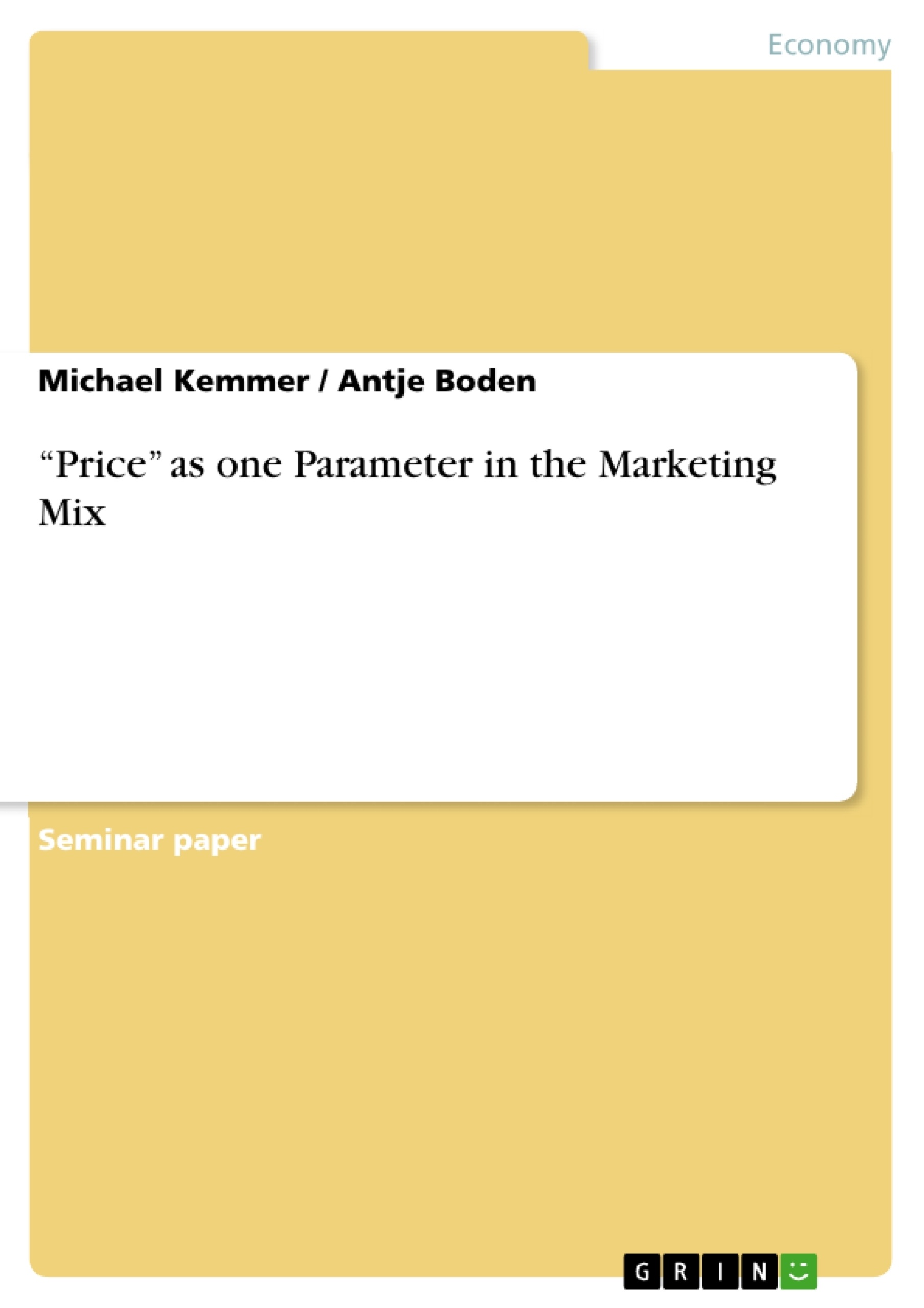When it comes to making buying decision, for example to buy a new car, the consumer is facing a numerous variety of prices for only one product. He or she has to decide whether to take the newest launched model or either the traditional one, with or without an insurance package, delivery or even buy from the internet. Naturally the consumer is reluctant to buy expensive products, when the run on
cheap ones are omnipresent in today’s market. Companies try to undercut one another and conduct themselves in would-be price battles. But all this is owed to the fact that on the one side the consumers have decreasing real earnings, which lead to a higher price sensibility, and on the other side the companies look at
saturated markets. These markets and their exhausted possibilities to differentiate the products cause a mass competition with the active implementation of pricing as a part of the marketing mix and as a competition instrument. This trend can not only be identified in the business to consumer (B2C) market, but it can also be found in
the business to business (B2B) market. In addition an increasing consolidation processes in large parts of the industry and retailing business is recognizable by applying purchasing agents to trade cheaper prices by using their power of demand. Classical examples are the two big discounters like ALDI and LIDL, when it is obvious that they pass over these good conditions to their consumers and use
this advantage in competition for their own business. Furthermore the internet with an increasing number of price comparison websites also contributes to this fight for the right price by offering price and product comparisons which hamper the strategies for a better price differentiation. A company’s survival and growth in such
challenging and competitive environment depends among other things on the effectiveness of its applied pricing policy.
Table of Contents
Executive Summary
List of Abbreviations
List of Figures
List of Tables
1. Introduction
2.1 Concept of Pricing Policy
2.2 Goals of Price Policy
2.3 What is a Price?
2.3.1 Definition of Price
2.3.2 Price and Consumer Value
2.3.3 The Drivers of Price
3. Methods of Setting Prices
3.1 Cost Orientated Pricing
3.2 Competitor Orientated Pricing
3.3 Customer Orientated Pricing
4. Price Strategies
4.1 New-Product Pricing Strategies
4.2 Price-Adjustment Strategies
4.3 Other Strategies
5. Ethical Constraints on Pricing
6. Results and Conclusion
Appendices
ITM Checklist
Bibliography
- Arbeit zitieren
- Michael Kemmer (Autor:in), Antje Boden (Autor:in), 2009, “Price” as one Parameter in the Marketing Mix, München, GRIN Verlag, https://www.grin.com/document/197106
-

-

-

-
Laden Sie Ihre eigenen Arbeiten hoch! Geld verdienen und iPhone X gewinnen. -

-
Laden Sie Ihre eigenen Arbeiten hoch! Geld verdienen und iPhone X gewinnen. -

-
Laden Sie Ihre eigenen Arbeiten hoch! Geld verdienen und iPhone X gewinnen. -

-
Laden Sie Ihre eigenen Arbeiten hoch! Geld verdienen und iPhone X gewinnen. -

-
Laden Sie Ihre eigenen Arbeiten hoch! Geld verdienen und iPhone X gewinnen. -

-
Laden Sie Ihre eigenen Arbeiten hoch! Geld verdienen und iPhone X gewinnen. -

-
Laden Sie Ihre eigenen Arbeiten hoch! Geld verdienen und iPhone X gewinnen. -

-
Laden Sie Ihre eigenen Arbeiten hoch! Geld verdienen und iPhone X gewinnen. -

-
Laden Sie Ihre eigenen Arbeiten hoch! Geld verdienen und iPhone X gewinnen. -

-
Laden Sie Ihre eigenen Arbeiten hoch! Geld verdienen und iPhone X gewinnen. -

-
Laden Sie Ihre eigenen Arbeiten hoch! Geld verdienen und iPhone X gewinnen.

